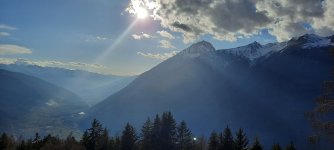First, I've learned so much from reading this forum -- thank you all.
I've read various posts about veiling glare and disagreements over such among some members for the identical model of binocular, and attributed sometimes merely to "differences among individuals."
I've had horrible problems at dusk with veiling glare on my dearly loved 8x32 EL FP's while doing daily sunset/twillight counts of northern harriers coming to a distant tall grass prairie roost. Unfortunately, because of landowner issues, access is limited and the roost is viewable only when facing westward, though not directly into the setting sun. Frankly, until the roost counts, I never realized I had such a terrible VG problem.
Over the past 3 weeks, I've asked 9 experienced members of my bird club to view the roost through my EL's at roughly the same time of day. After they adjusted my EL's eyecups/diopter for their eyes, there was unanimous concurrence over the EL's disturbing VG. However, like them, I certainly saw VG through their binoculars too, though for some models (e.g., 8x42 Nocitivids), it was noticeably less pronounced.
My takeaway -- perhaps all too obvious to most of you-- is that while differences between individuals can account for a lot of things optically, seeing VG under the above-stated conditions is not one of them for a particular pair of binoculars. My wish is that VG could somehow be quantified under the conditions stated above for a wide array of alpha binoculars so that a consumer could better gauge their suitability. Thanks for listening.








